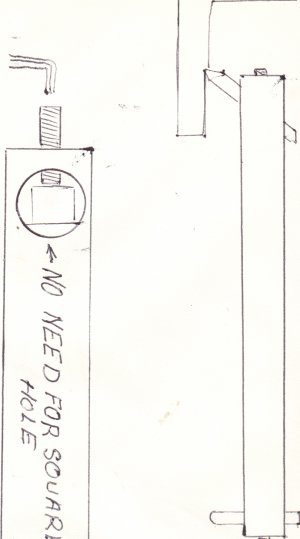- Joined
- Nov 16, 2012
- Messages
- 5,596
Agreed!
I still believe you would get better results with the other style IMHO. I would make sure the top of the tool is hitting first and not dragging on the front and side. You may want to spray the top of the insert with bluing and don't turn on the power...slowly turn the spindle by hand and with a light shining in to the hole see what part of the tool hits first. I always have the tool on the center line. Use a shorter one. I think if you ever used the other style you would never use that type A lathe is a lathe weather it is a mini or a full sized. Rich
PS: Go to the Machine Scraping and Restoration forum and scroll back as some of the members have built inexpensive diamond wheel lapping / grinding machines. We use them on carbide scraper blades, but they would also work on boring bars or tool bits too.


